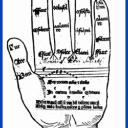Yahoo Answers is shutting down on May 4th, 2021 (Eastern Time) and beginning April 20th, 2021 (Eastern Time) the Yahoo Answers website will be in read-only mode. There will be no changes to other Yahoo properties or services, or your Yahoo account. You can find more information about the Yahoo Answers shutdown and how to download your data on this help page.
Trending News
How can a sing in the key of C, have a D and an Fm in?
I'm so confused by music!! I'm trying to learn the piano, but things keep trowing me off. Like: Half the world away by Oasis, is written in the key of C, but has D and F minor in it. How? Those chords are not in the key of C?!!!
** SONG not sing
5 Answers
- MamiankaLv 79 months ago
You say you are trying to learn piano - but we can assume that you do not have a teacher! You cannot TEACH YOURSELF something this complicated. As far as the chords - you have gotten several good responses. You can continue to be frustrated, or you can take some LIVE lessons, where your questions can be answered.
- ?Lv 69 months ago
Music can have "accidentals" in it; sharps, flats, or natural signs to indicate the composer wants chord or notes to be played that are not in the scale of the key signature. There is a D note in the C major scale. and Fm chord would require a flat sign on the A note. I play a song in the key of Eb that includes the chords G7, Cm, F, and Bb.
- Tony BLv 49 months ago
I think that when you say that chords are “in” a key you mean that they can be constructed using only notes in the associated scale. So for example that the only chords “in” the key of C are chords that can be constructed from the notes in the scale of C. Those chords would be called “diatonic” chords.
As you have discovered though, music in a particular key is not limited to diatonic chords. Using chords that contain notes not in the associated scale is NOT uncommon. I believe these chords would be called “chromatic chords”.
- Robert JLv 79 months ago
The "Key" may be in a way, used just for convenience.
It defines what notes on the staff do not need sharps or flats in the written music.
The notes actually used can be anything; it's down to the writer to use whatever key they feel fits most of the piece.
Pieces written in C, so hypothetically all "white notes" can still have sharps / flats and often do.
No different in any other key, any combination is possible.
- How do you think about the answers? You can sign in to vote the answer.
- NancyLv 79 months ago
Sometimes artists break the rules by introducing notes or chords that are not in the key in order to create dissonance, an unpleasant sound, that they then go and resolve with another chord or note later on that is in the proper key. This is a way to drive the music forward, progress it, make one's ear beg for the next sound to resolve that dissonant note or chord.
It can't be overdone or else it just sounds bad, like the artist is out of key or doesn't know what they're doing. But done strategically and deftly, it can make a song quite compelling and can create these extremely satisfying moments for the listener where suddenly everything makes sense and feels right again, like creating an itch, letting the person suffer with it for a bit, and then finally scratching it and you kind of moan in ecstatic relief and are all, "Oh, yeah, that's it."
The Beatles were quite known for employing this technique, something that gained them much criticism from music critics back in their day but much love from fans and is now a defining characteristic of their music. It should then be no surprise that Oasis, the founding fathers of 90's Britpop and who have stood accused of being exceedingly derivative of the Beatles, employs this technique as well in much the same manner.





